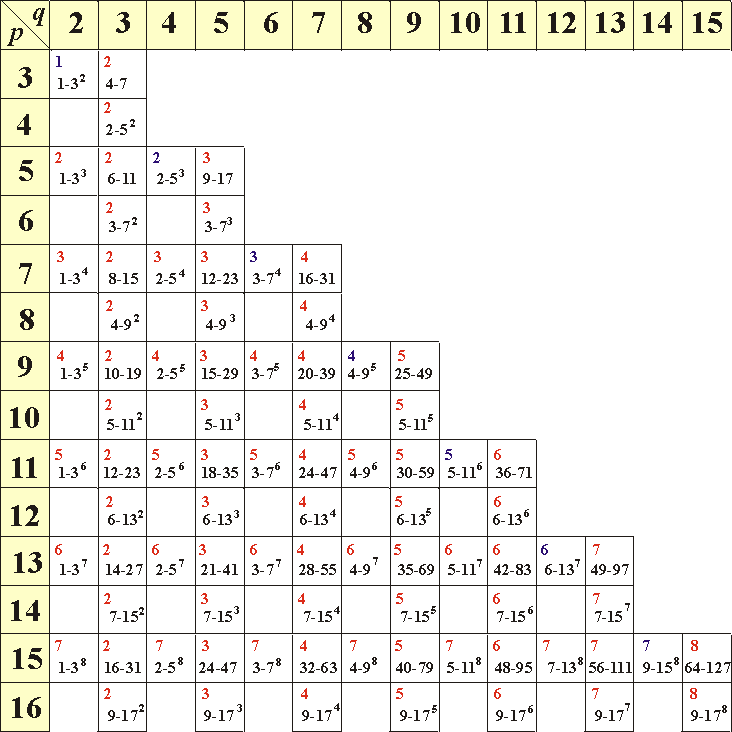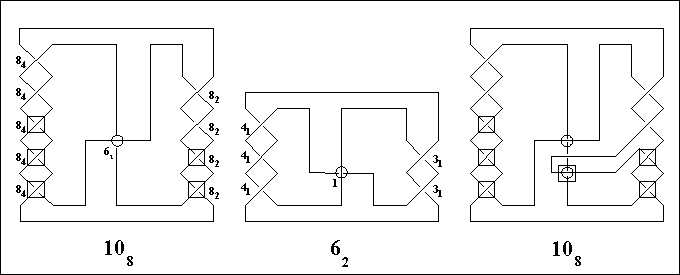Conjecture:
(a) u(1) = 0, where 1 is the unknot;
(b) u(k) = min u(k-)+1,
where the minimum is taken over all knots k-, obtained
from a minimal projection of k by one change of crossing.
The Conjecture holds for all the exactly determined
unknotting numbers (n £ 10)
from the book "A Survey of Knot Theory"
by A.Kawaguchi, and if in all the other cases
(A=1 or 2; B=2 or 3, etc.) for the unknotting numbers
we take the maximal values for A, B, etc. If any of that
unknotting numbers is smaller than its maximal estimated value,
this will be the counterexample for the Conjecture.
This Conjecture, introduced by J.A.Bernhard in the paper
"Unknotting numbers and their minimal knot diagrams", J. Knot Theory & Ramifications,
3, 1 (1994), 1-5, was also independently proposed by the author in 1995, and effectively used
for the calculation of unknotting numbers of the knots with
n £ 10 crossings.
The unknotting number is the property of family. For example,
for the knots p2, p11p, (p+2)11p, p212,
p1112, u(k) = 1. By using Conjecture, it is possible to calculate unknotting
numbers for different very large classes of knots, e.g. for all the knots
of the form pq.
In the similar way it is possible to define ¥-crossing change,
transforming a crossing into uncrossing and preserving the number
of components. Such ¥-change is considered
in Mirror Curves
(Tripod Server, USA)
as the introduction of the corresponding mirror.
Every ¥-crossing change transforms an
alternating knot into other alternating knot. For
¥-unknotting numbers
u¥(k)
we could formulate the analogous Conjecture. For n £ 10, u¥(k) = 1
for linear knots 2p+1, u¥(k)= 2
for the knots
pq, p1q (p+q =1
(mod 2)), p,q,r (p+q+r = 0
(mod 2)), and u(k) ³
3 for all the other knots.

For the knots p1q
(p³q³2)
from this table, the unknotting numbers are given in left upper corner.
For all of them holds the relationship u(p1q) =
min ((u((p-2)1q), u(p1(q-2)), u((p-2)1(q-2)) + 1,
except for the knots of the family (2m+1)1(2m), where
u((2m+1)1(2m)) =
min ((u((2m-1)1(2m)), u((2m+1)1(2m-2)), u((2m)1(2m-1)) + 1.
For all knots p1q, u¥ = 3 iff
p + q = 0 (mod 2); otherwise, u¥ = 2.
For every knot is given its Alexander polynomial, and -ak is a shorthand
for -a+a..., where a occurs k times.
The recent progress is made by A.Stiomenow,
who succeeded to prove that the Conjecture holds for a restricted
class of knots: a rational knot of unknotting number one has an
unknotting number one minimal diagram (A.Stoimenow:
Vassiliev
Invariants and Rational Knots of Unknotting
Number One).


